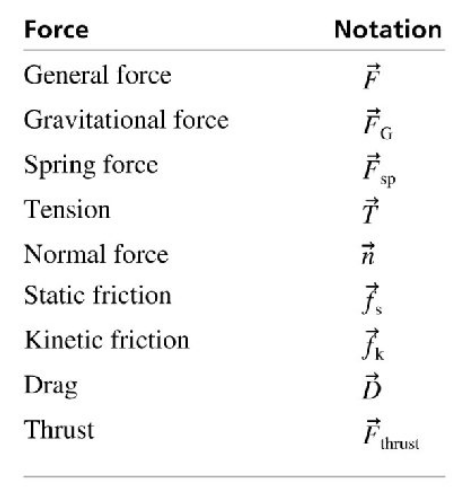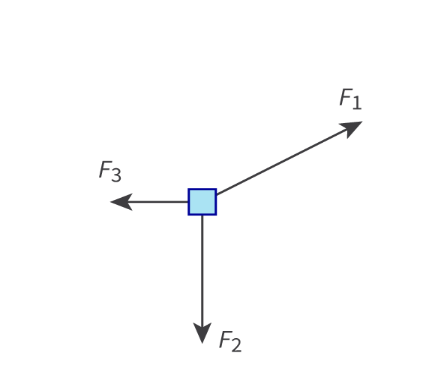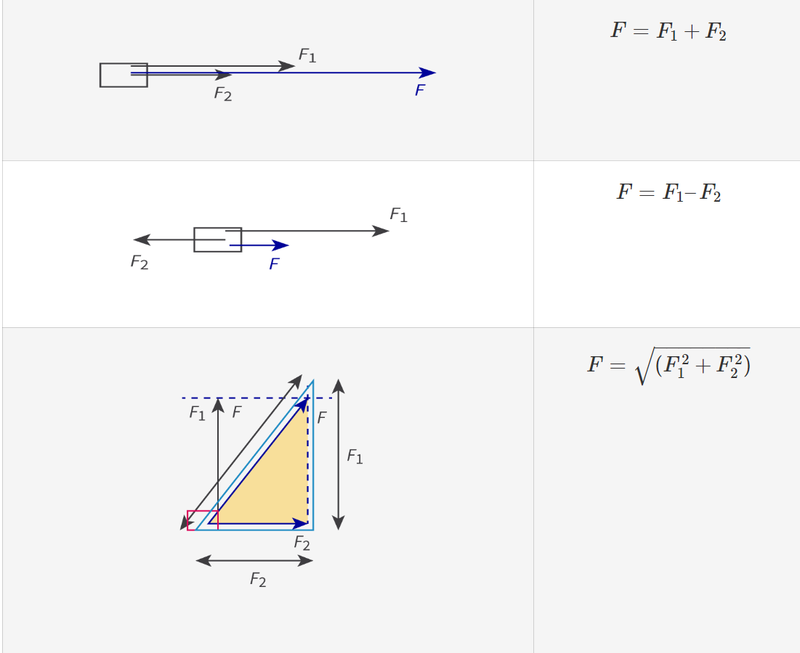What is a Force?
- A force is a physical quantity that describes the interaction between bodies.
- When bodies interact, forces are experienced by the bodies.
- When bodies stop interacting, the forces stop.
- Forces, denoted by F, are vector quantities.
- However, most forces have their own different symbols, such as weight F₉ and electromagnetic force E.

Examples of forces
- A force can more simply be described as a push or pull on an object.
- Common examples are:
Weight
- Weight is the product of mass and the gravitational acceleration of free fall.
- On Earth, it is what pulls towards the centre of the Earth.
- W = mg
- However, keep in mind that the constant g is different for different objects as they have different mass.
- On the moon you weigh far less than Earth but on Jupiter you'd way far more; yet you would have the same mass on all three!
Air Resistance
- Air resistance, or drag is a contact force that acts against anything moving in an air or liquid.
- It is caused by all the little particles that make up the fluid colliding with the object moving through it.
- If its difficult to visualize, imagine trying to run through a ball pit, yet with trillions of incredibly tiny balls that slow down your movement.
Friction
Friction is a contact force that acts against anything moving.
Upthrust
- Upthrust, or buoyancy force, is the force that liquids apply onto objects within them.
- The denser the fluid, and the more volume displaced by the object, the greater the upthrust.
- When buoyancy is equal to weight, the object starts floating!
Restoring Force
- Restoring force is a force that acts in the opposite direction to displacement, returning the object to its equilibrium position.
- Restoring force is seen most commonly in springs.
- As you pull on the spring, it gets harder and harder to pull it, as the spring is pulling back as it tries to return to its original shape.
Modelling Forces
- A force can either change the motion of an object by stopping its movement or by setting it in motion.
- It is said that a force is applied to, acts on, or is exerted on or by a body.
- As forces occur when bodies interact, it must involve at least two different objects.
- In physics however this can be simplified, showing the forces acting only on the body we are interested in.
- This can be drawn as a free-body diagram.
- Forces are vectors and thus are drawn as arrows.
- The image below shows a free-body diagram with 3 forces acting upon the body.

Adding Forces
- Forces can be added together like any other vectors of the same quantity.
- The sum of multiple forces is called the resultant force.
- The diagram below shows the forces acting on the object with the equation to find the resultant force on the right.

- When the resultant force on an object is equal to zero, then it is in equilibrium, and it stays in the same state it is currently in.
- If the object is still, it will stay still as long as its in equilibrium.
- If an object is moving, it will keep moving in the same direction with the same velocity as long as it is in equilibrium.
- That's why the book on your table stays still, or why a meteor in space can keep travelling forever!
- If the resultant force is less than or greater than zero, then the object will always be accelerating in one direction or the other.
Sources
https://slidetodoc.com/ch-5-forces-and-newtons-laws-defining-force/#google_vignette